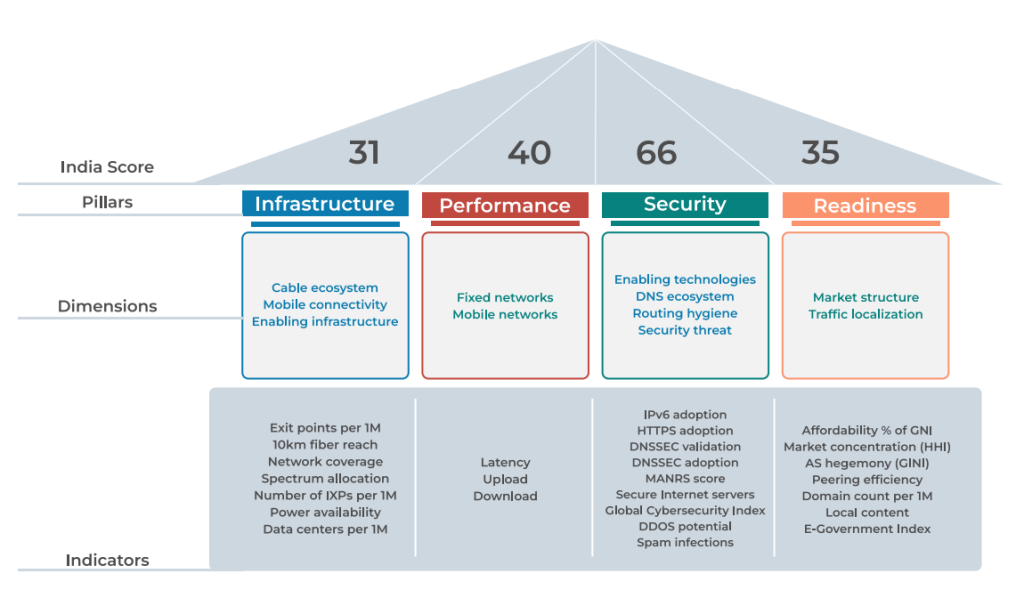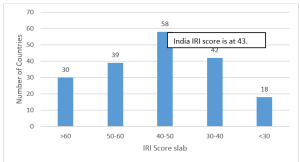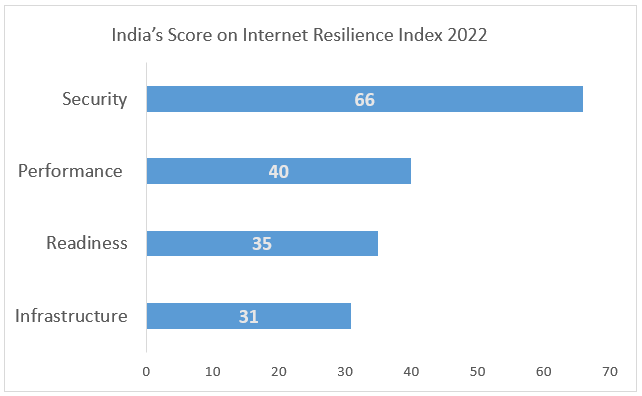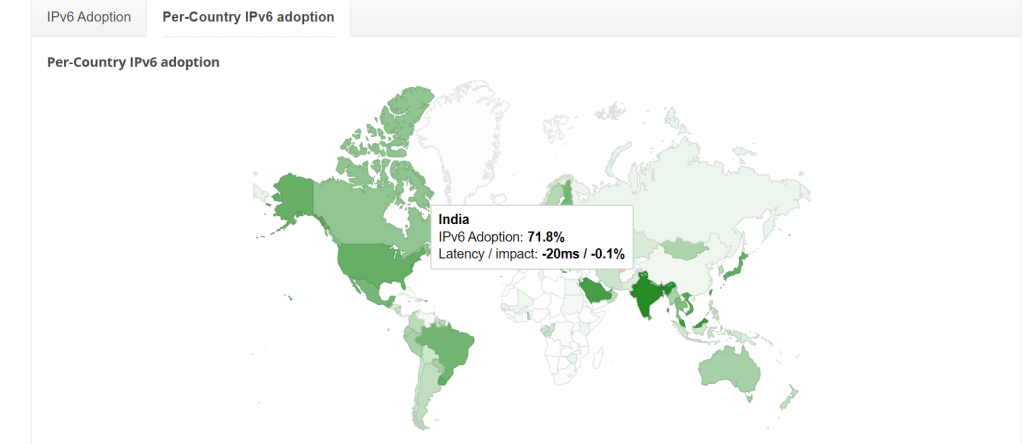Perspective
India’s digital backbone: Crafting a resilient Internet future—Our net security scores a global high

As generally known, ‘resilience’ refers to the ability to bounce back or recover from shocks and stresses. It is, prima facie, a simple trait yet can be quite complex to develop and nurture. In the area of internet, it is even more complicated and difficult. And, as universally acknowledged, internet has become the essence of our existence- an entity which has become intimately interwoven into our daily activities – the requirement may be that of applying for a job, purchasing vegetables, provisions or anything for the household, having a medical consultation, official work or conferencing, attending an academic class or buying a cinema ticket etc. in fact, during and post Covid 19 pandemic, it has truly become second lifeline for survival. Hence internet infrastructure availability at all times is of very high importance in the modern digital era and hence the presence of excellent internet resilience is of great criticality for any successful economy today.
Internet resilience involves the capability of the internet to withstand disruptions and continue functioning effectively. It’s like a robust safety net for online activities, ensuring continuity of work as well as of personal/social aspects that even in the face of cyber threats, outages, or other disturbances, the internet can adapt, recover, and maintain its essential services, much like a strong bridge that withstands storms and keeps traffic flowing smoothly.
The resilience property of the internet in a country or region is measured and quantified through a parameter called Internet Resilience Index (IRI) which is designed to reflect the robustness and reliability of the internet system available. While the exact methodology can vary depending on the organization or entity conducting the assessment, several common factors are typically considered:
- Infrastructure diversity and quality: This involves assessing the physical and technological infrastructure supporting internet connectivity, such as the number of independent internet service providers, submarine cables, and data centers.
- Network redundancy and routing efficiency: This factor examines whether there are alternative pathways for data transmission in case of a primary route failure, and how efficiently data is routed through the network.
- Cybersecurity measures: The strength and effectiveness of cybersecurity protocols and defenses against cyber-attacks play a significant role in resilience.
- Regulatory framework and governance: This includes examining laws, regulations, and policies that affect internet access and stability, such as censorship, control over internet resources, and investment in infrastructure.
- Service accessibility and affordability: This factor assesses how easily and affordably the population can access the internet, considering economic barriers, geographical distribution, and service quality.
- Historical performance and reliability data: Past performance, including instances of outages, their duration, causes, and recovery times, is also considered.
Each of these factors is usually quantified and scored, and the scores are combined into a single index. The exact scoring methodology can vary; some may use a simple average, while others might give different weights to different factors depending on their perceived importance. The goal is to provide a comprehensive overview of the strengths and weaknesses of internet infrastructure and governance in different regions, helping in policy-making, investment decisions, and understanding digital divide issues.
The Pulse Internet Resilience Index (IRI) collates and tracks open-source Internet resiliency metrics for more than 170 countries. As of August 2023, India ranked sixth in South Asia for Internet Resilience with an overall score of 43 percent; however, this is not really reflective of India’s achievements in this field. The IRI framework collates around 30 sets of public metric data that relate to four pillars of a resilient Internet, as showcased in figure 1.

Source: Google IPv6 statistics
India is in a tougher position than peer nations in the matter of achieving high IRI ranking. This is because of the formidable challenges arising from its large geography with many difficult and inaccessible terrains.

|
IRI score |
Number of Countries |
| >60 | 30 |
| 50-60 | 39 |
| 40-50 | 58 |
| 30-40 | 42 |
| <30 | 18 |
As shown above, India is currently in the mid of the bell curve for IRI, it falls in the mid bracket in terms there are 60+ countries having better IRI score and there is 60+ countries having score less than India. However, we need to also appreciate that the IRI value for 2022 would be based on measurements and data of 2021 and hence probably not reflective of the ground reality today as regards the ‘performance’ parameter post the introduction of 5G services in October 2022 as also significant improvements in infrastructure via rollouts optic fibre cable, interconnect exchange points, regulatory and policy actions etc. Notwithstanding this point, India’s score indicates the opportunity to strategically effect improvements in certain areas to augment our IRI score and have our critical internet infrastructure more resilient and reliable to help leapfrog the overall economy to a very high global rank.
According to four main pillars that make up the IRI, India scores 66 per cent in security, 40 per cent in performance, 35 per cent in market readiness, and 31 per cent in infrastructure.

Source: Pulse IRI 2022
India’s rating on security is a global high which is quite creditable. The various strong building block measures in terms of IPV6 adoption, HTTPS adoption mandates have boosted this pillar. India’s good take-up of IPv6 is a great contributor to the high security score. With over 900 million internet users, India is the second largest online market in the world, and it serves to have the good secure network access.

India ranking the highest for IPv6 adoption means that here users experience very few issues when connecting to IPv6-enabled websites, according to the Google data. The GoI has been quite active in the country, with first roadmap of IPv6 adoption back in 2010 which required all major services providers to offer IPv6 services, and state and central government departments to upgrade to IPv6.
With the introduction of affordable 5g services and top telecom operators offering data plans at significantly lower rates, making high-speed internet accessible to millions. During the last quarter of 2022, the rollout of 5G services commenced, reaching its peak in the second quarter of 2023. Notably, India witnessed a remarkable ascent in the Speedtest Global Index, soaring from 119th place in September 2022 to an impressive 47th place by August 2023, as reported by Ookla. The introduction of 5G has catalyzed a substantial improvement in download speeds, with a remarkable increase of 3.59 times. Median download speeds, which stood at 13.87 Mbps in 2022, surged to an impressive 50.21 Mbps in 2023, underscoring the transformative impact of 5G on India’s connectivity landscape.
In terms of the cable ecosystem India is to cover much ground to match up with the peer countries. India lags in fiber kilometers (fkm) per capita, falling short of the recommended 1.3 km needed for effective fiberization. While Japan boasts 1.35 fkm, the U.S. has 1.34 fkm, and China maintains the ideal threshold of 1.3 fkm, India’s current fkm is a mere 0.09. In the month of August, the Union Cabinet has given its nod to a last-mile broadband connectivity initiative as part of the Bharat Net project with an outlay of Rs 1.39 lakh crore, will boost the fiberisation creating stronger broadband pathways and reliable internet infrastructure.
There is good scope to augment other enabling infrastructure like IXPs and Data centres, which will boost our IRI ranking. Internet Exchange Points (IXPs) and data centers are helpful because they help improve the performance and reliability of internet connectivity. The country now ranks 14 on data centers. Our data center capacity in the country needs to grow much more, given the continuing rise in internet users and the explosive growth in data consumption. The economy is on a roll right now with GDP growth of 7.6% in Q2 and hence it will surely not be difficult to attract the requisite investments.
The Indian Internet is poised on a high and set for further quantum improvements. From the critical overall internet connectivity and resilience perspective, the country is already in a creditable position and shooting for excellence through further giant strides on the digital highway. It is having its 2023 India Internet Governance Forum Conference on 5th December at Bharat Mandapam in Delhi and is bound to chart its strategic way forward, contributing to and learning from global best practices in internet resilience and aiming for expeditious progress in the fac of diverse and evolving challenges.















You must be logged in to post a comment Login